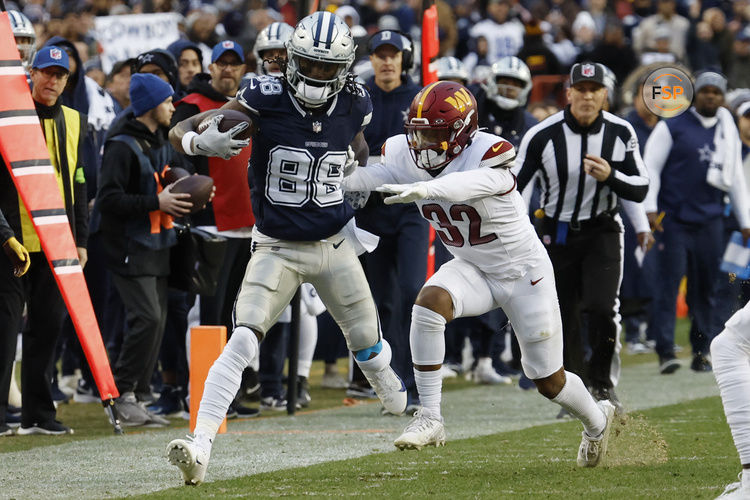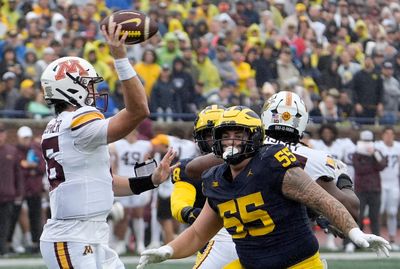Running Back vs. Wide Receiver: Who Should You Draft First in Fantasy Football?
Comparing the total scoring of backs and receivers over the past three years to help determine the best draft strategies.
Running back or wide receiver first? Which is more important to building your fantasy football team? Which position is more integral to winning? I’ve heard arguments for both sides, and I’ve wavered back and forth myself.
Rather than wonder any longer, I decided to put research and rudimentary math to use to try to answer a few questions regarding RBs and WRs in fantasy. I went through the fantasy point totals for the top running backs and receivers over the past three seasons to determine who scored more points and how fast total points declined.
The first part seems self-explanatory: The position that scores more points is more important. It’s not that simple, though, when factoring in supply/demand and available points, and that’s what the second facet helps to capture.
Point totals from FantasyPros were used from 2021-2023. There are tables at the bottom with the data used for this exercise.
Standard Leagues
Running backs score higher at the top in standard scoring. The difference shrinks as you go further down the rankings, and wide receivers take over as higher scorers after the top 30.
That’s not surprising; 30 running backs essentially means the starting back for each team, so you’re getting down to backups after that point. The second wide receiver is on the field far more often than the second back, meaning he is in a better position to score fantasy points.
In football terms, 11 personnel means that the offense has one running back, one tight end and three receivers on the field. Teams used 11 personnel 62.5% of the time last season. Even that number is dragged down for most teams because the Falcons used 11 personnel on just 15.5% of plays, 20 percentage points lower than anyone else.
In 2023, 26 teams used 11 personnel on more than half of their plays. The third receiver is essentially a starter in the NFL. Three receivers on 32 teams means there are 96 starters to choose from. Even if we give the benefit to a few teams and say they treat two backs like starters, it tops out around 35.
We can argue the exact numbers, but it’s not an exaggeration to say that close to three times as many receivers might be fantasy relevant than running backs.
PPR Leagues
Wide receivers take things over in PPR leagues, not a surprise given that a large portion of scoring is done through catching passes. Very few backs can match the receiving prowess of even the 50th best receiver; the players running routes on nearly every pass play get so many more potential targets, even if the ball doesn't get thrown their way often.
Receivers score higher than running backs at all levels in PPR leagues. Wide receivers also lose points at a slower rate when you go down the rankings, making the difference larger.
The main difference here from standard scoring is that the receivers are the best players at the top, making them more appealing. Christian McCaffrey scored almost 60 more points than CeeDee Lamb in standard scoring last season; in PPR, Lamb scored 12 more points than McCaffrey. The position with most of the top-10 scorers changes depending on the league type.
Fantasy Impact
In standard leagues, drafting running backs at the top is my favorite plan because they score at a higher rate and the position loses points faster as you go down rankings. You can buy in bulk with receivers later in the draft and find value in your WR2-4 spots by playing matchups.
Teams' second and (sometimes) third receivers are going to be available throughout your fantasy draft, and there will be free agents you would have drafted unless you’re in a deep league. If you draft a receiver first overall in a 12-team league, the top 10 running backs will likely be off the board by your second pick. That means you only have 20-ish backs to realistically choose from, and none of them are in the premier group.
Two of your top three picks should probably be running backs. Using our FantasySP ADP Standard Rankings, here are the top guys at these positions available outside the top 50:
- RB: Aaron Jones, David Montgomery, James Conner, Rhamondre Stevenson, D'Andre Swift, Najee Harris
- WR: Zay Flowers, George Pickens, Tee Higgins, Amari Cooper, Tank Dell, Christian Kirk, Keenan Allen, Terry McLaurin
Which group do you prefer? There is probably a top-20 back in that group at the end of the season, but there’s more downside and age concerns than anything else. The receiver group includes four or five guys who are WR1 on their team (Flowers, Pickens, Cooper, Kirk, McLaurin), a receiver who was drafted in the second round in fantasy last year (Higgins), and a player coming off a 100-catch, 1,200-yard season (Allen).
The backs feature four guys likely to be in some form of time-share (Montgomery, Conner, Stevenson, and Harris), a back who was just replaced for a younger model (Jones) and a player whose only good fantasy year came last season in the running factory of Philadelphia (Swift).
In PPR leagues, there is a little more incentive to take a receiver in the first round. The top receivers score higher than the top backs, and the gap gets larger further down the rankings.
Because those receivers in the second, third, fourth, etc. tiers score a higher percentage above their running back counterparts, though, it again means that better receivers can be found later in the draft.
The most valuable running backs are going to go fast; if you were to take two receivers with your top two picks, you would be running the risk (no pun intended) of missing out on at least the top 15 backs. You’d be praying that Joe Mixon would be there as your RB1; that’s not a good thing in 2024.
Flex Implications
With so many more realistic options, a wide receiver should probably be your flex most weeks. If you have three high-level backs, don’t sit one for a middling receiver, but with all else considered equal, lower-ranked receivers are going to score more points than running backs at the same level.
This is especially true in PPR leagues, but standard leagues might also lean toward a WR flex depending on your roster. That’s an important disclaimer: There are no steadfast rules in fantasy football. Everything is dependent on your roster, who is healthy, the best matchups and 100 other things.
It’s important to remember that receivers have an advantage when you get away from the star players, though, and that it could be an important part of making flex decisions.
Data Used in Exercise
These are the numbers that were used for the analysis above. The numbers in the top four rows are the averages of the top 10 players, 11th through 20th players, etc. for both positions. The bottom three rows show the percentage of total points lost from the top 10 to 11-20, top 10 to 21-30, and top 10 to the 31-40th players' averages.
As stated above, running backs score more at the top in standard leagues and receivers score higher at all levels in PPR. As you go further down the rankings, running backs lose total points at a higher rate, meaning receivers hold more value later in fantasy drafts.
2023 PPR
| Ranking | Running Backs | Wide Receivers |
| 1-10 Average | 275.7 | 308.6 |
| 11-20 Average | 214.4 | 241.3 |
| 21-30 Average | 187 | 215.6 |
| 31-40 Average | 144.7 | 184.8 |
| % Drop 10 to 20 | 22.2% | 21.8% |
| % Drop 10 to 30 | 32.2% | 30.1% |
| % Drop 10 to 40 | 47.5% | 40.1% |
2023 Standard
| Ranking | Running Backs | Wide Receivers |
| 1-10 Average | 224.8 | 204.7 |
| 11-20 Average | 175 | 158.4 |
| 21-30 Average | 148.4 | 138.2 |
| 31-40 Average | 112.6 | 119.7 |
| % Drop 10 to 20 | 22.2% | 22.6% |
| % Drop 10 to 30 | 34% | 32.5% |
| % Drop 10 to 40 | 49.9% | 41.5% |
2022 PPR
| Ranking | Running Backs | Wide Receivers |
| 1-10 Average | 291.2 | 299.6 |
| 11-20 Average | 214.7 | 229.3 |
| 21-30 Average | 171.9 | 194.3 |
| 31-40 Average | 139.7 | 172.5 |
| % Drop 10 to 20 | 26.3% | 23.5% |
| % Drop 10 to 30 | 41% | 35.1% |
| % Drop 10 to 40 | 52% | 42.4% |
2022 Standard
| Ranking | Running Backs | Wide Receivers |
| 1-10 Average | 238.3 | 199 |
| 11-20 Average | 171 | 147.5 |
| 21-30 Average | 139.4 | 121.6 |
| 31-40 Average | 115.5 | 109.4 |
| % Drop 10 to 20 | 28.2% | 25.9% |
| % Drop 10 to 30 | 41.5% | 38.9% |
| % Drop 10 to 40 | 51.5% | 45% |
2021 PPR
| Ranking | Running Backs | Wide Receivers |
| 1-10 Average | 276.9 | 313.6 |
| 11-20 Average | 209 | 241.9 |
| 21-30 Average | 171.6 | 208.8 |
| 31-40 Average | 136.2 | 171.1 |
| % Drop 10 to 20 | 24.5% | 22.9% |
| % Drop 10 to 30 | 38% | 33.4% |
| % Drop 10 to 40 | 50.8% | 45.4% |
2021 Standard
| Ranking | Running Backs | Wide Receivers |
| 1-10 Average | 226.8 | 212 |
| 11-20 Average | 170.7 | 152.4 |
| 21-30 Average | 136.3 | 133.5 |
| 31-40 Average | 103.9 | 110.5 |
| % Drop 10 to 20 | 24.7% | 28.1% |
| % Drop 10 to 30 | 39.9% | 37% |
| % Drop 10 to 40 | 54.2% | 47.9% |








